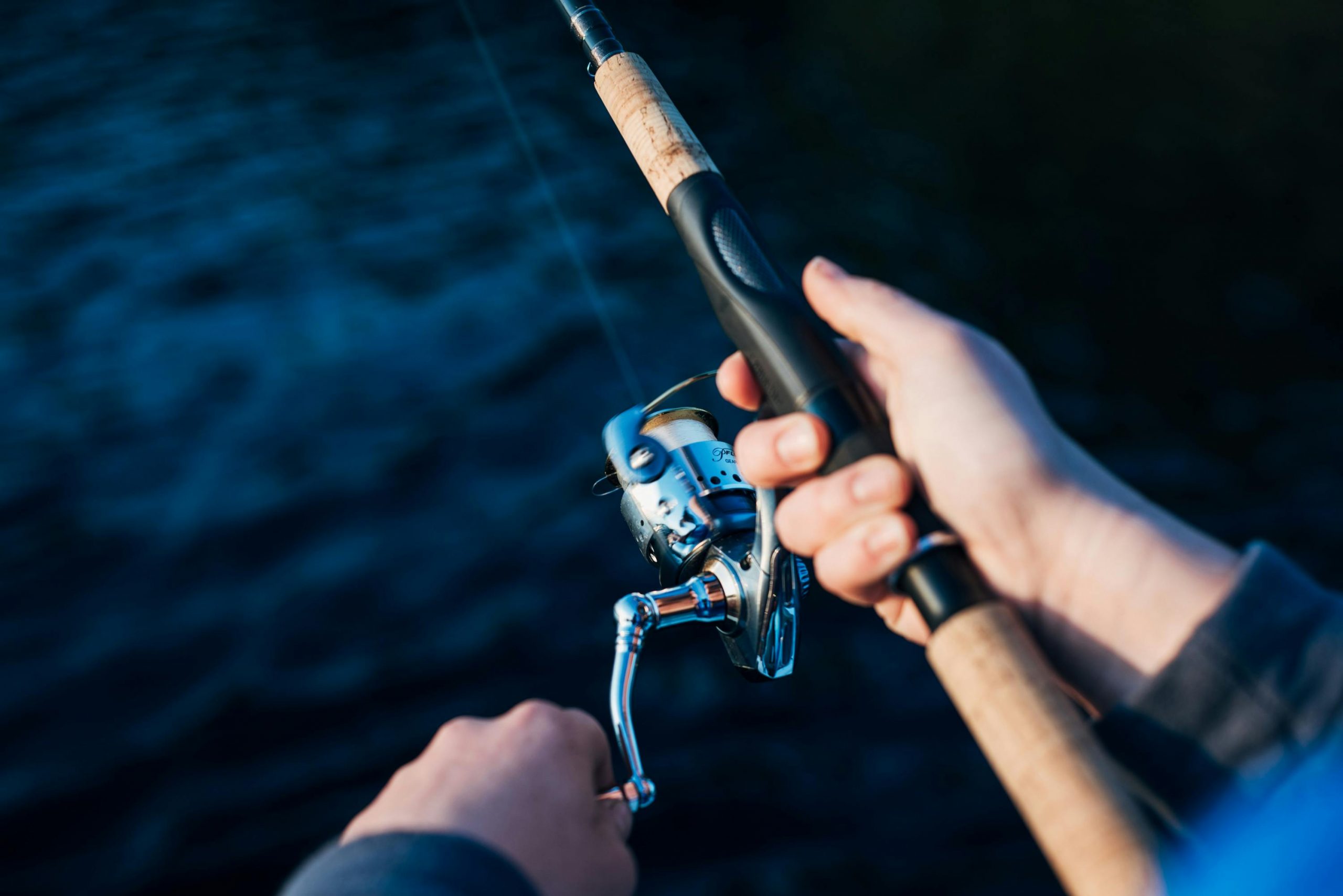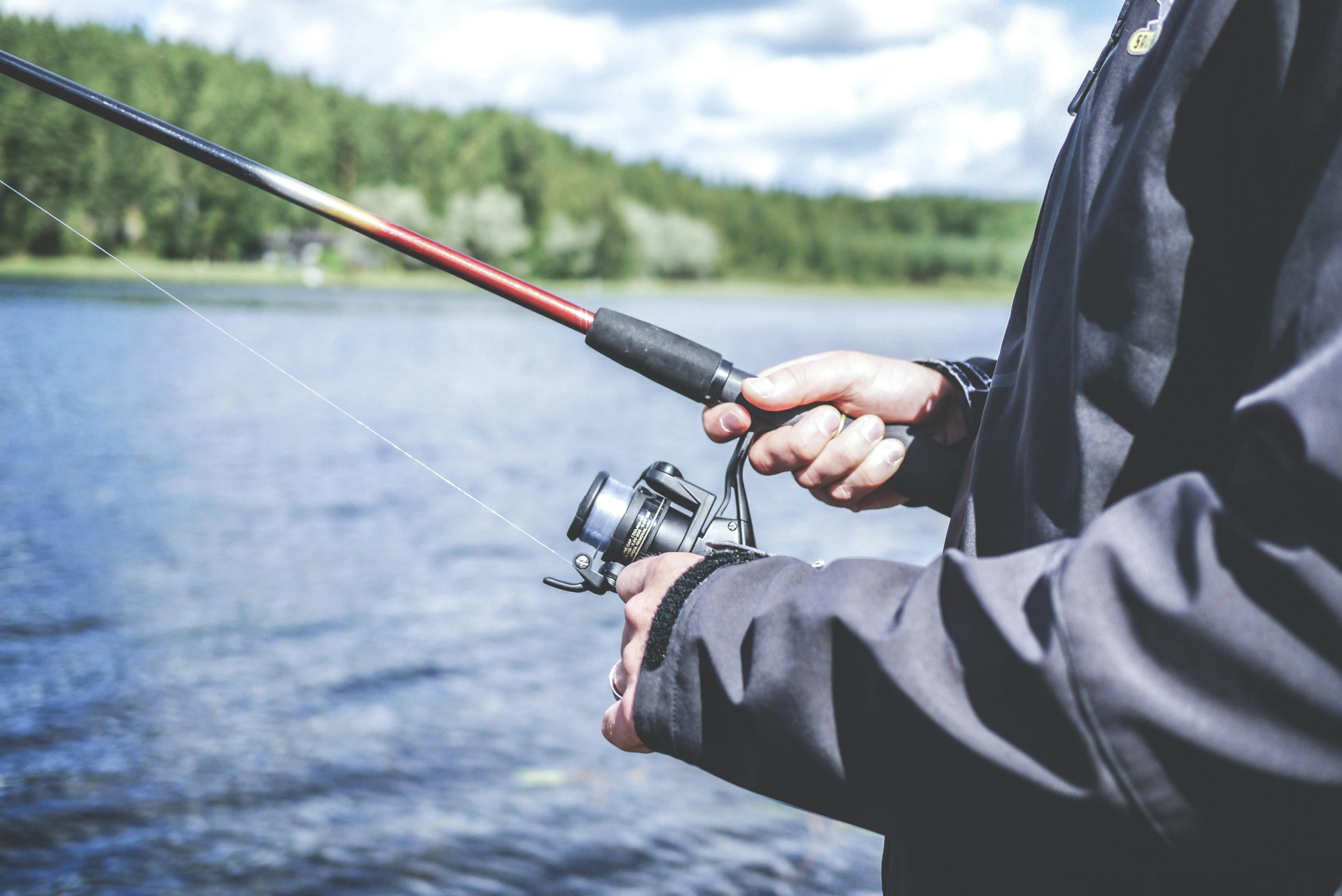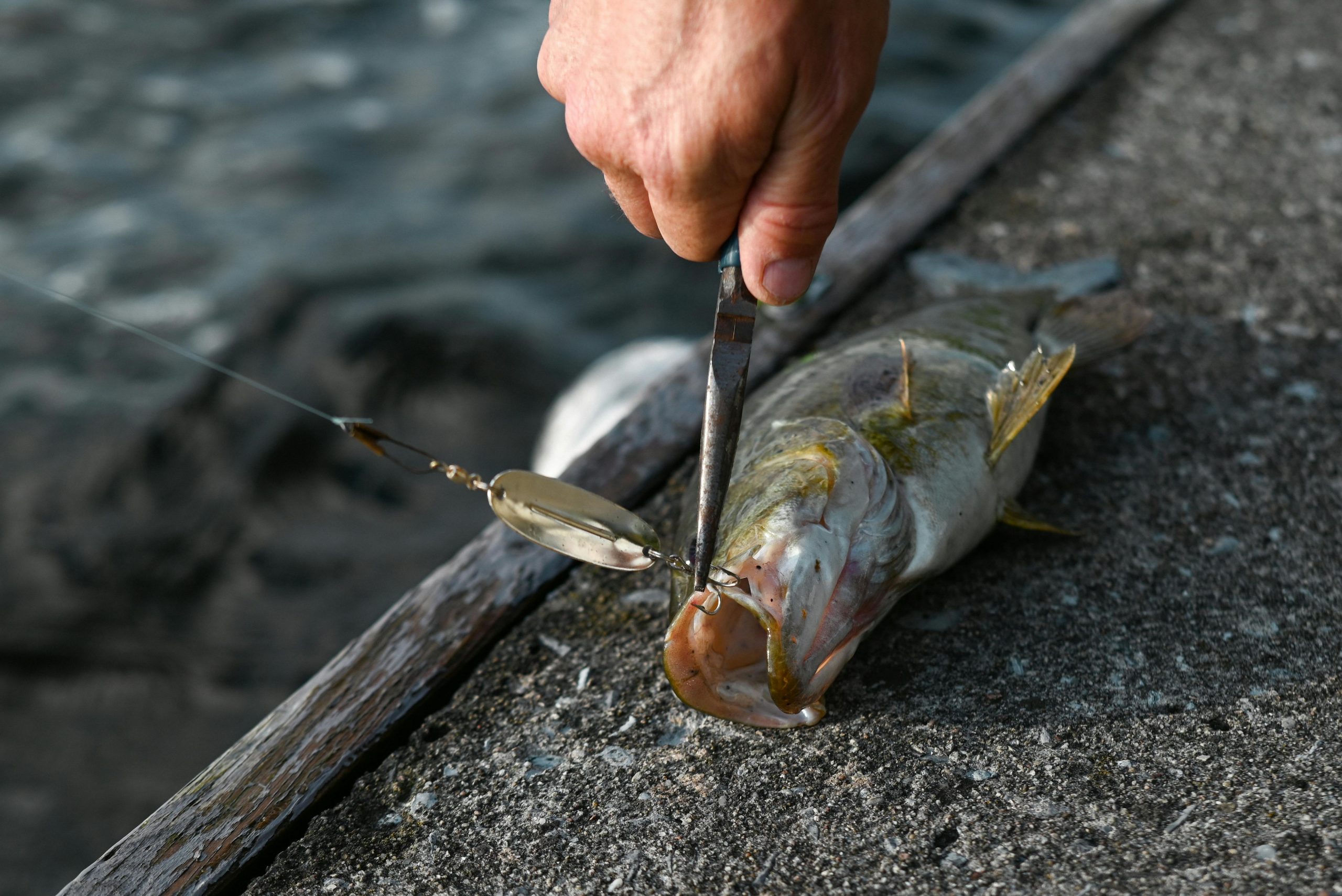
Bass fishing is one of the most popular outdoor activities in the United States. Whether you’re new to fishing or already spend weekends at the lake, having the right bass fishing tips can help you catch more fish and enjoy the sport even more.
In this guide, we’ll break down the best bass fishing tips in a way that’s easy to understand. You’ll learn about choosing the right gear, where to find bass, how to read the water, and the best times to fish. Whether you’re fishing from shore or boat, this article has you covered.
What Is Bass Fishing?

Bass fishing targets a type of freshwater fish called bass. It’s one of the most popular forms of sport fishing in North America because of how exciting and challenging it can be. Anglers enjoy the fight these fish give when hooked and the wide range of techniques used to catch them.
The most common types in North America are:
- Largemouth bass
- Smallmouth bass
- Spotted bass
Largemouth bass are the most popular. They’re known for their wide mouths, aggressive strikes, and strong fights. They often hide in shallow areas with cover like weeds, logs, or rocks. These fish are commonly found in lakes, rivers, and ponds, and they can grow to over 10 pounds.
Bass fishing is popular with both beginners and experienced anglers. It’s a fun way to enjoy the outdoors while testing your fishing skills and learning about the habits of these impressive freshwater predators.
Basic Bass Fishing Gear
You don’t need a ton of expensive equipment to start bass fishing, but having the right basic gear can make a big difference. Here’s what you’ll want to bring along:
Rod & Reel
- Spinning rod: A great option for beginners. It’s easy to cast and works well with lighter lures and finesse techniques like soft plastics or small crankbaits.
- Baitcasting rod: Offers more control and power for heavier lures and thicker cover. Best for experienced anglers who want to target big bass or use jigs and spinnerbaits.
Fishing Line
- Monofilament: Stretchy and forgiving, making it ideal for beginners. It’s also inexpensive and works for a wide range of setups.
- Fluorocarbon: Nearly invisible underwater, making it perfect for clear water and finicky bass. It also sinks, which helps with deep baits.
- Braided line: Extremely strong and has no stretch. Perfect for fishing in heavy cover like weeds or lily pads where you need extra pulling power.
Hooks & Lures
- Worm hooks, offset hooks: Perfect for rigging soft plastic worms, craws, and creatures. Useful for Texas and Carolina rigs.
- Jigs: Great for mimicking crawfish or bottom-dwelling bait. Effective around structure.
- Spinnerbaits: Flashy, vibrating lures that work well in murky water or when covering a lot of water quickly.
- Crankbaits: Designed to dive and wobble like a fleeing baitfish. Excellent for triggering reaction strikes.
With just these basics, you’re ready to get out on the water and start targeting bass with confidence.
Where to Find Bass
Bass don’t just swim around aimlessly—they like to stay in places where they feel safe and can easily ambush prey. These hiding spots fall into two main categories: structure and cover.
Structure
Structure refers to the shape or layout of the lake or river bottom. Bass use these natural formations to move, feed, or rest.
- Drop-offs: Sudden changes in depth where bass can hide in deeper water and strike upward.
- Points: Areas where the land juts into the water. These act as highways for bass moving between shallow and deep water.
- Ledges: Underwater shelves or steps where bass often suspend, especially during warm or cold weather.
Cover
Cover includes anything bass can hide behind or in. It helps them stay out of sight and ambush bait.
- Logs: Fallen trees or submerged wood make perfect hiding spots for big bass.
- Rocks: Provide shade and protection—also attract baitfish.
- Weed beds: Offer oxygen, food, and camouflage. Bass often sit right on the edge of them.
- Docks: Bass love to hide in the shade under docks, especially in warmer weather.
Pro tip: Focus on edge zones—places where different types of structure or cover meet, like where weeds meet open water or where shallow flats drop off into deeper water. These are bass hot spots!
Best Time to Go Bass Fishing

Timing matters a lot in bass fishing. Knowing when to fish can be just as important as where. Bass behavior changes based on time of day and season.
Time of Day
- Morning (Sunrise to Mid-Morning): One of the best times to fish. Bass are active, feeding near the surface in shallow areas. Water is cooler, and there’s less pressure from other anglers.
- Late Afternoon to Dusk: Another prime window. As the sun lowers, water temperatures drop slightly, and bass become more aggressive again.
- Midday: Can be tough. The sun is high, and bass often move to deeper water or hide in shaded cover. Try fishing deep ledges or under docks.
Seasons
- Spring: A favorite for many anglers. Bass move to shallow areas to spawn. They’re more visible and easier to catch with slower, soft plastic lures.
- Summer: Early morning and evening are best. Midday heat sends bass deeper or under cover. Try fishing with crankbaits, jigs, or soft plastics in shaded spots.
- Fall: Bass feed heavily to fatten up for winter. Look for them chasing baitfish near shallow points and weed edges.
- Winter: Bass becomes sluggish. Fishing is slower, but using jigs or slow-moving baits near deep structures can still get bites.
Top Bass Fishing Lures & When to Use Them
Using the right lure can make all the difference in catching bass. Each type works best in different conditions, so it’s good to learn when and where to use them.
1. Soft Plastic Worms
- How to Use: Rig them with a Texas or wacky setup.
- Best For: Calm water, especially around grass, docks, and fallen logs.
- Why They Work: Their slow, lifelike movement attracts bass hiding in cover. Great for beginners and pros alike.
2. Spinnerbaits
- How to Use: Cast and retrieve at a steady pace.
- Best For: Murky or stained water, and on windy days.
- Why They Work: The spinning blades reflect light and create vibration, drawing in aggressive bass from a distance.
3. Crankbaits
- How to Use: Vary your retrieve speed to mimic fleeing baitfish.
- Best For: Searching wide areas in mid-depths (5–15 feet).
- Why They Work: Help you find active bass quickly. Ideal for covering lots of water.
4. Jigs
- How to Use: Drag or hop slowly along the bottom.
- Best For: Cold water, rocky bottoms, or heavy cover.
- Why They Work: Imitate crawfish and bottom-dwelling prey. Add a trailer (soft plastic) for more lifelike movement.
5. Topwater Lures
- How to Use: Use short jerks and pauses to mimic struggling prey.
- Best For: Early mornings, late evenings, or cloudy days.
- Why They Work: They create exciting surface strikes. Great for shallow water and when bass are feeding on top.
How to Read the Water
Learning to read the water helps you know where bass are hiding.
- Calm days: Lighter lures and slower retrieves.
- Windy days: Use noisy or fast-moving lures.
- Cloudy days: Bass may roam more, so cover more water.
- Clear water: Use natural colors.
- Muddy water: Use darker or brighter lures with vibration.
Casting & Retrieval Tips
Even with the best gear and lures, how you fish is just as important. Good casting and retrieval techniques can help you catch more bass and avoid scaring them away.
Casting
- Target the Right Spots: Cast near cover like logs, docks, or weed beds. That’s where bass like to hide and wait for food.
- Don’t Spook the Fish: Try to land your lure softly on the water. Loud splashes can scare bass away.
- Practice Accuracy: The more accurate your cast, the better chance you have of getting your lure in front of a fish.
Retrieval
- Mix Up the Motion: Start with a steady reel-in, then pause. This makes your lure look like injured prey.
- Add Action: Try twitching the rod tip or hopping the lure along the bottom to get the bass’s attention.
- Change It Up: If you’re not getting bites, try reeling faster, slower, or using a different pattern. Bass react differently depending on the day and water conditions.
Fishing from Shore vs. Boat
You can catch bass whether you’re standing on land or out on the water. Each has its own pros and techniques to keep in mind.
Shore Fishing Tips
- Find the Right Spot: Look for areas with shade, weeds, rocks, or places where deep water is close to shore. Bass often hide in these spots.
- Stay Quiet: Walk slowly and avoid making noise. Bass can be easily scared by sudden movement or loud sounds.
- Cast Smart: Cast ahead of where you’re walking. This gives you a better chance of catching fish before they notice you.
Boat Fishing Tips
- Use Electronics: A fish finder helps you locate underwater structure like drop-offs, brush piles, or ledges where bass hang out.
- Change Angles: Being in a boat lets you cast from different directions and reach deeper or harder-to-access spots.
- Try Different Depths: Move around and experiment with fishing at various depths until you find where the bass are biting.
Seasonal Bass Fishing Tips
Bass behave differently throughout the year. Knowing what to use and where to fish during each season can help you catch more.
Spring
- Go Shallow: Bass move into shallow areas to spawn.
- Use Soft Plastics: Cast soft plastic worms or lizards near beds where bass are nesting.
- Try Jigs: Jigs work well around rocks, docks, and other shallow cover.
Summer
- Fish Early or Late: Bass avoid the heat by going deeper during the day, but they feed actively in the morning and evening.
- Topwater Fun: Use topwater lures at dawn or dusk for exciting strikes.
- Go Deep: During midday, switch to deep-diving crankbaits or worms near structure.
Fall
- Speed Up: Bass chase baitfish to bulk up before winter.
- Use Spinnerbaits & Crankbaits: These fast-moving lures help cover more water and trigger bites.
- Find Baitfish: Where you see small fish, you’ll usually find bass nearby.
Winter
- Slow Things Down: Bass are sluggish in cold water.
- Use Jigs & Drop Shots: These lures work well when fished slowly along the bottom.
- Fish Deep: Target deeper holes or channels for the best chance of a bite.
Catch and Release Tips
Even if you’re not keeping the fish, handle them with care.
- Wet your hands before touching the fish.
- Don’t keep bass out of water too long.
- Remove hooks gently using pliers.
- Release the fish head-first into the water.
Final Thoughts
Bass fishing is both simple and exciting. The more time you spend practicing, the better you’ll get. Try different lures, explore new spots, and remember that even slow days can teach you something. With these bass fishing tips, you’re well on your way to landing more fish—and having more fun doing it.

